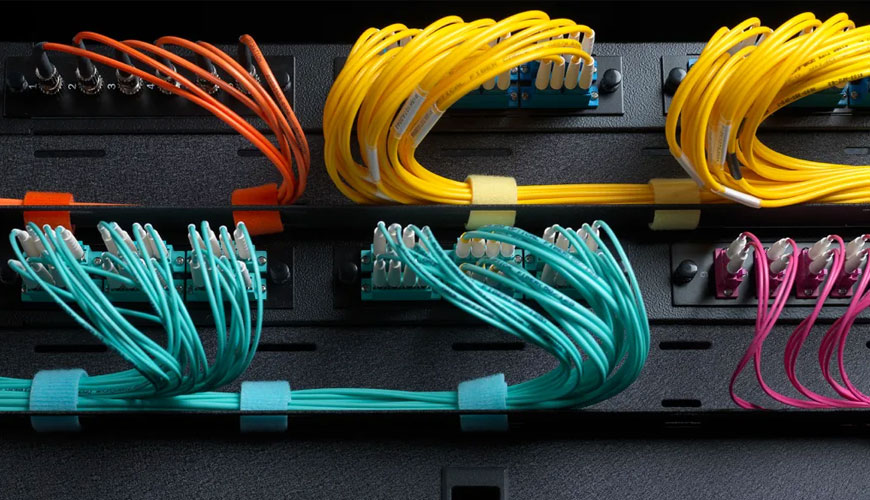

EUROLAB laboratory provides testing and compliance services within the scope of IEC 60794-1-21 standard. This part of the IEC 60794 standard applies to fiber optic cables and cables with a combination of both optical fibers and electrical conductors for use with telecommunications equipment and devices using similar techniques.

The purpose of this standard is to define test procedures to be used in establishing uniform requirements for mechanical requirement performance. Throughout this standard, the term optical cable also includes fiber optic units, microchannel fiber units, etc. may contain. General requirements and definitions are provided in IEC 60794-1-20 and IEC 60794-1-2 in a complete reference guide for all types of test methods.
This test method is applied to fiber optic cables tested at a given tensile strength to examine the behavior of attenuation and/or fiber elongation stress as a function of the load on a cable that may occur during installation and operation. This method is intended to be non-destructive.
Unless otherwise specified in the relevant specification, the length under tension ≥ 50 m. For cables that require special anchoring devices (eg OPGW, fully dielectric self-supporting (ADSS), heavy wire armored cables, etc.), the minimum length will be 25 m.
Short lengths in the tensile test will adversely affect the accuracy of the measurement. The lengths shown above are the minimum recommended lengths for this test. The total sample length is longer than the live length to allow clamping and connection to test equipment.
Unless otherwise specified, test conditions will conform to the extended test conditions defined in IEC 60794-1-20. Load the cable into the tensioning device and secure it. A method of securing the cable shall be used at both ends of the tensioning equipment, and this method shall lock the cable evenly, restricting the movements of all the components of the cable, including the fibers.
For most cable structures (e.g. braided type cables), clamping to cable elements excluding fibers is practical and sufficient to achieve attenuation changes and/or both the maximum allowable tensile load and the strain margin of the cable. However, for certain cable structures (eg, single loose tube), it may be necessary to prevent fibers from slipping in order to obtain correct strain margin figures.
For antenna cable types, if required in the detail specification, the cable can be fixed by means of anchoring devices suitable for the cable type considered. For some heavily armored cables, a clamping device including a sock holder or similar fastening device may be used.
Connect the test fiber of the cable under tensile test to the measuring apparatus. For the pulse delay (time-of-flight) technique of IEC 60793-1-22 Method C, care must be taken that the reference length does not change during the drawing of the sample.
The voltage will be increased continuously to the required values given in the relevant specification. The attenuation or change in fiber tension should be recorded as a function of cable load or elongation. Multiple attenuation and/or fiber strain gauges can be used for cables with multiple fibers.
To get an appointment, to get more detailed information or to request an evaluation, you can ask us to fill in our form and reach you.